Overview
RabbitMQ and ActiveMQ are two of the most popular open-source message brokers used in enterprise environments for asynchronous communication and system integration. While they serve similar purposes, they differ significantly in architecture, performance characteristics, and ideal use cases. This comprehensive comparison explores their key differences, helping you determine which solution best fits your specific needs.
Understanding the Basics
RabbitMQ Overview
RabbitMQ is an open-source message broker written in Erlang that implements the Advanced Message Queuing Protocol (AMQP). It focuses on reliability, flexibility, and ease of integration, providing built-in clustering capabilities for high availability and fault tolerance[1]. RabbitMQ is designed to get messages to their destination quickly and in the correct order, making it suitable for many real-time messaging scenarios[8].
ActiveMQ Overview
ActiveMQ is an Apache open-source message broker written in Java that fully supports the Java Message Service (JMS) API. It's known for its broad protocol support, including AMQP, STOMP, MQTT, and others[3][10]. ActiveMQ offers flexibility and reliability with features like Master-Slave architecture and shared storage clustering, making it well-suited for enterprise applications, especially those heavily invested in Java technologies[3].
Architectural Differences
Smart Broker vs. Dumb Broker Architecture
One of the most fundamental differences between these messaging platforms involves how brokers and clients interact:
RabbitMQ follows a "smart broker, dumb client" model where the broker handles the complexity of message routing and delivery[4]. This centralized intelligence allows for sophisticated message handling but can become a bottleneck at extremely high volumes.
ActiveMQ uses a more traditional approach that balances responsibilities between broker and client. While not as extreme as Kafka's "dumb broker, smart client" model, ActiveMQ provides more flexibility in how clients interact with the system.
Message Routing Mechanisms
RabbitMQ uses an exchange-based architecture where:
Messages are published to exchanges
Exchanges route messages to queues based on bindings
Supports multiple exchange types (Direct, Fanout, Topic, Headers) for flexible routing[2][8]
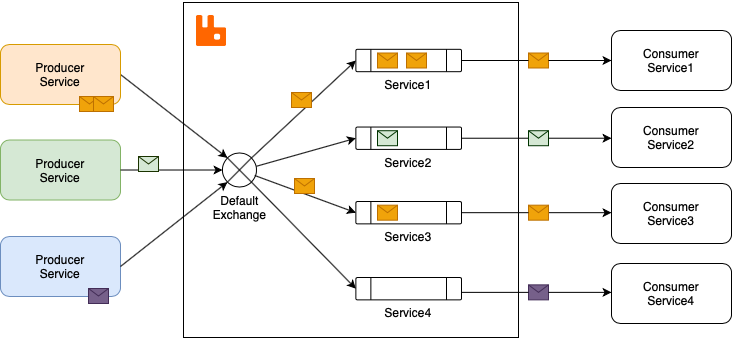
ActiveMQ employs a more conventional destination-based model:
Messages are sent directly to queues or topics
Uses traditional JMS semantics
Provides network of brokers for distributed deployment[8]
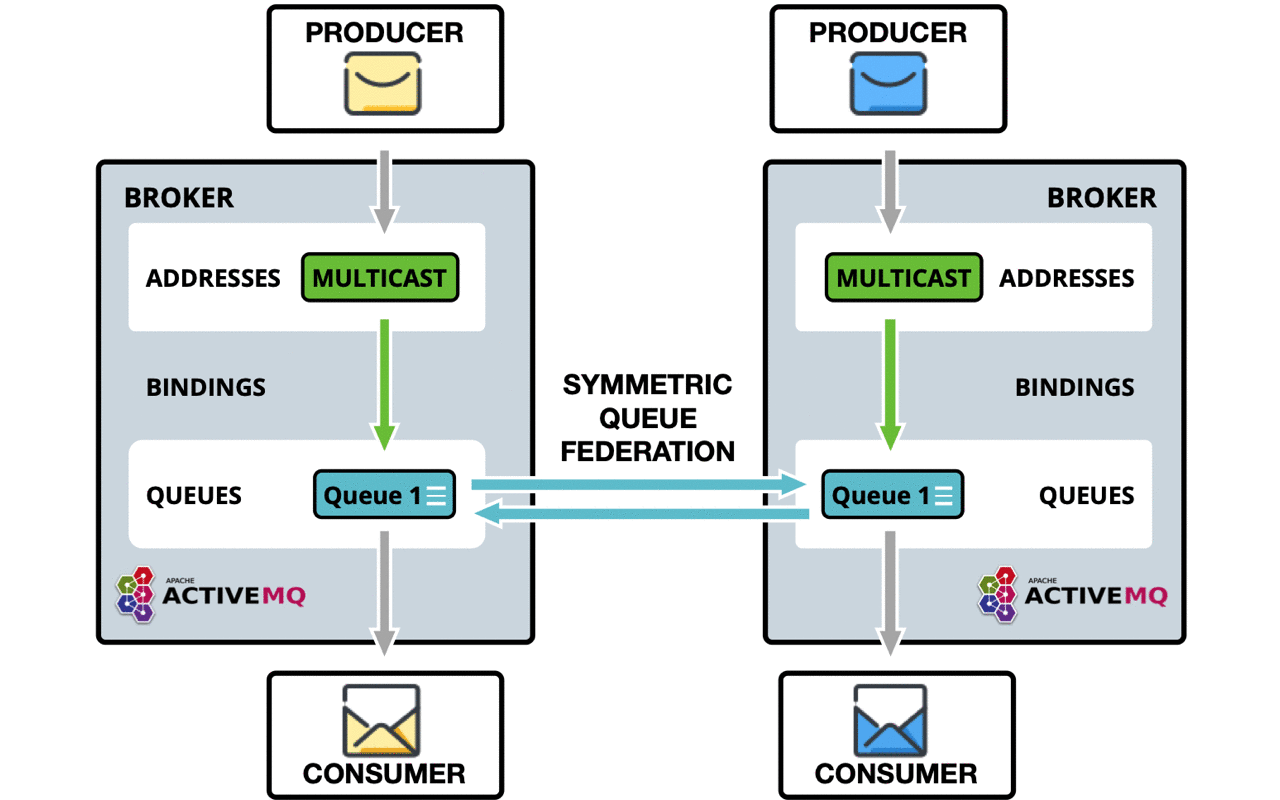
Feature Comparison
| Feature | RabbitMQ | ActiveMQ |
|---|---|---|
| Implementation Language | Erlang | Java |
| Primary Protocol | AMQP | JMS |
| Additional Protocols | MQTT, STOMP (via plugins) | AMQP, STOMP, MQTT, OpenWire |
| Message Routing | Exchange/Binding/Queue model | Traditional queues and topics |
| High Availability | Mirrored queues, quorum queues | Master-Slave, shared storage |
| Clustering | Built-in clustering | Network of brokers |
| Management Interface | Comprehensive web UI | Web console |
| Transaction Support | Limited | Full JMS transactions, XA support[11] |
| Message Persistence | Durable exchanges/queues | JDBC, LevelDB, KahaDB |
| Throughput | Higher (5-6w TPS)[3] | Lower (thousands TPS)[3] |
| Latency | Lower (can achieve ~1ms at proper load)[16] | Higher than RabbitMQ |
| Memory Utilization | Memory-intensive with many queues | JVM tuning required |
| Deployment Complexity | Moderate (requires Erlang) | Moderate (requires Java) |
Performance Characteristics
Throughput and Scalability
RabbitMQ typically outperforms ActiveMQ in scenarios requiring high message throughput. According to comparative data:
RabbitMQ can achieve approximately 5.95w messages per second in standard configurations, with mirrored queues reaching throughput of 38 MB/s[1][16]
ActiveMQ generally handles lower throughput (thousands of messages per second), making it suitable for most enterprise applications but potentially insufficient for high-volume scenarios[3]
In a benchmark comparing several messaging systems, RabbitMQ achieved impressive latencies of around 1ms at proper load levels (30 MB/s), though performance degraded significantly under higher loads[16].
Resource Utilization
RabbitMQ :
Erlang-based, optimized for concurrent operations
Memory usage increases with queue count
Generally efficient CPU utilization when properly configured
Performs well with smaller messages
ActiveMQ :
Java-based, requires careful JVM tuning
Memory usage varies based on message store
Typically higher CPU utilization than RabbitMQ
Handles larger messages more efficiently[10]
Use Cases
When to Choose RabbitMQ
RabbitMQ is particularly well-suited for:
Complex routing scenarios requiring sophisticated message distribution patterns[2]
Financial services and payment systems needing strict message ordering and confirmation[3]
Microservices architectures benefiting from its flexible exchange types
Low-latency requirements where millisecond messaging is critical[1]
Polyglot environments using multiple programming languages[2]
When to Choose ActiveMQ
ActiveMQ excels in these scenarios:
Java-centric environments heavily invested in JMS[2]
Traditional enterprise systems like ERP and CRM applications[3]
Multi-protocol requirements needing broad protocol support[14]
Systems requiring XA transactions for distributed transaction support[11]
Legacy system integration projects[3]
Implementation Guide
RabbitMQ Configuration Essentials
RabbitMQ's configuration centers around:
Configuration file structure : Primary rabbitmq.conf file with optional advanced.config for complex settings[5]
Virtual hosts : Logical groupings of resources
Exchange and queue definitions : Defining the messaging topology
Clustering configuration : For high availability setups
Best Practices for RabbitMQ
Use multiple channels over single connections to avoid connection churn; aim for one connection per process and one channel per thread[9]
Keep queues short to prevent resource overutilization in cluster deployments[9]
Implement proper queue length limits to prevent memory issues
Use appropriate exchange types for your routing needs
Set up dead-letter exchanges for handling failed message processing
ActiveMQ Configuration Essentials
ActiveMQ configuration focuses on:
XML-based configuration : Through activemq.xml file
Broker and connector settings : Defining transport and network options
Destination policies : Queue and topic configurations
Message store configuration : Persistence options
Security settings : Authentication and authorization
Best Practices for ActiveMQ
Optimize Producer Flow Control (PFC) to regulate message flow and prevent broker overload[7]
Configure appropriate memory settings to prevent out-of-memory errors
Select the right persistence store based on durability and performance requirements
Implement connection pooling to improve performance
Monitor broker health via JMX and other tools[7]
Troubleshooting Guide
RabbitMQ Common Issues
Memory management problems
Symptoms: High memory usage, broker crashes
Solutions: Implement queue length limits, use lazy queues, monitor memory usage metrics
Cluster synchronization issues
Symptoms: Slow node joining, performance degradation during sync
Solutions: Plan cluster changes during off-peak hours, monitor synchronization progress
Performance degradation with many queues
Symptoms: Increasing latency, decreased throughput
Solutions: Review queue architecture, consider queue consolidation or sharding
ActiveMQ Common Issues
Message delivery delays
Symptoms: Increasing latency, message backlogs
Solutions: Monitor broker performance, optimize network configuration, increase memory allocation[6]
Connection issues
Symptoms: Failed connections, unpredictable disconnects
Solutions: Implement connection pooling, check network configuration, review security settings
Out-of-memory errors
Symptoms: Broker crashes, performance degradation
Solutions: Configure appropriate memory settings, implement producer flow control[7]
Deployment Considerations
RabbitMQ Deployment
Installation requirements : Requires Erlang runtime
Clustering model : Nodes share users, virtual hosts, exchanges, and bindings
Monitoring tools : Built-in management UI, Prometheus integration
Resource sizing : Memory is particularly important; plan for queue growth
ActiveMQ Deployment
Installation requirements : Requires Java runtime
Clustering model : Network of brokers, Master-Slave configurations
Monitoring tools : Web console, JMX integration
Resource sizing : CPU and memory requirements depend on message volume and persistence type
Conclusion
Both RabbitMQ and ActiveMQ are mature, feature-rich message brokers that serve different strengths and use cases:
Choose RabbitMQ when :
Complex message routing is required
High throughput and low latency are critical
You need flexible exchange types for sophisticated messaging patterns
You're building microservices or distributed systems requiring reliable messaging
Choose ActiveMQ when :
JMS compliance is necessary
Your technology stack is heavily Java-based
You need broad multi-protocol support
Transaction support (including XA) is required
You're integrating with traditional enterprise systems
The decision ultimately depends on your specific requirements, existing technology stack, performance needs, and team expertise. Many organizations even use both solutions for different parts of their infrastructure, leveraging the strengths of each where they make the most sense.
If you find this content helpful, you might also be interested in our product AutoMQ. AutoMQ is a cloud-native alternative to Kafka by decoupling durability to S3 and EBS. 10x Cost-Effective. No Cross-AZ Traffic Cost. Autoscale in seconds. Single-digit ms latency. AutoMQ now is source code available on github. Big Companies Worldwide are Using AutoMQ. Check the following case studies to learn more:
Grab: Driving Efficiency with AutoMQ in DataStreaming Platform
Palmpay Uses AutoMQ to Replace Kafka, Optimizing Costs by 50%+
How Asia’s Quora Zhihu uses AutoMQ to reduce Kafka cost and maintenance complexity
XPENG Motors Reduces Costs by 50%+ by Replacing Kafka with AutoMQ
Asia's GOAT, Poizon uses AutoMQ Kafka to build observability platform for massive data(30 GB/s)
AutoMQ Helps CaoCao Mobility Address Kafka Scalability During Holidays
JD.comx AutoMQ x CubeFS: A Cost-Effective Journey at Trillion-Scale Kafka Messaging
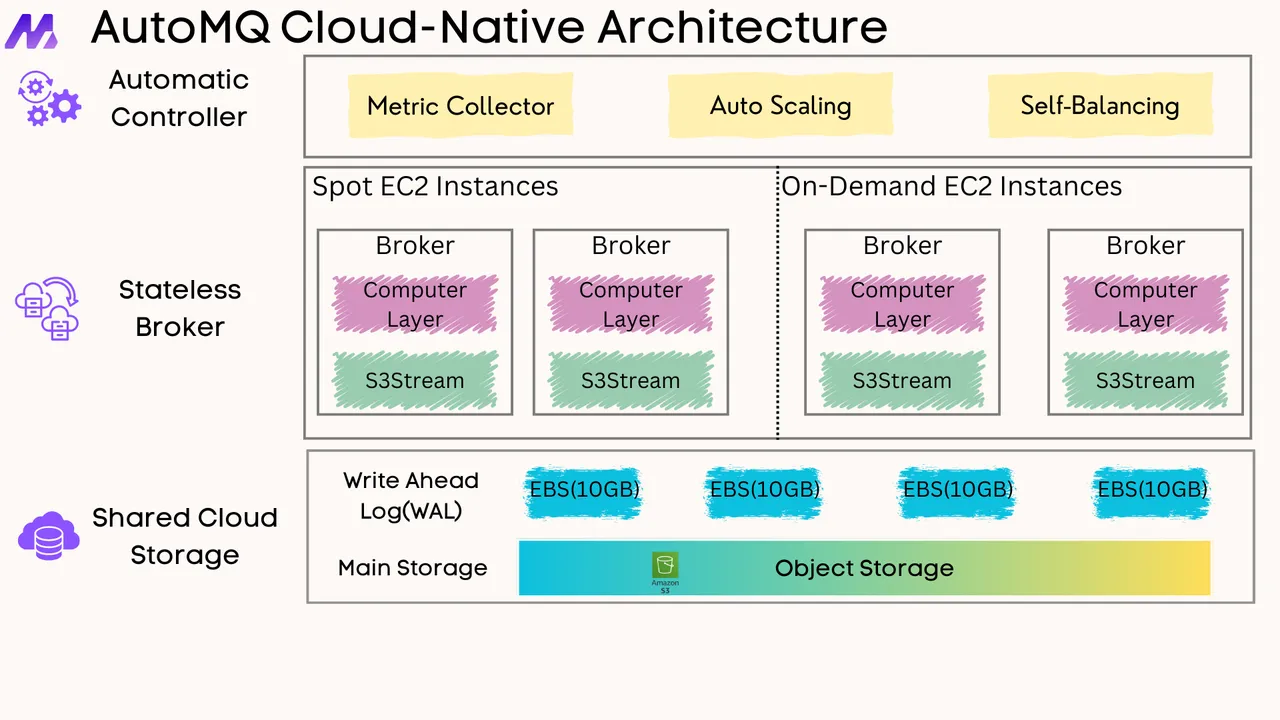





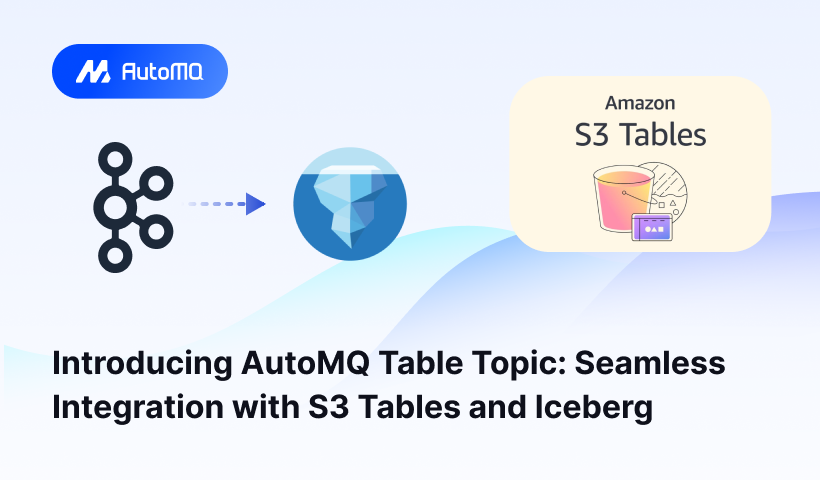
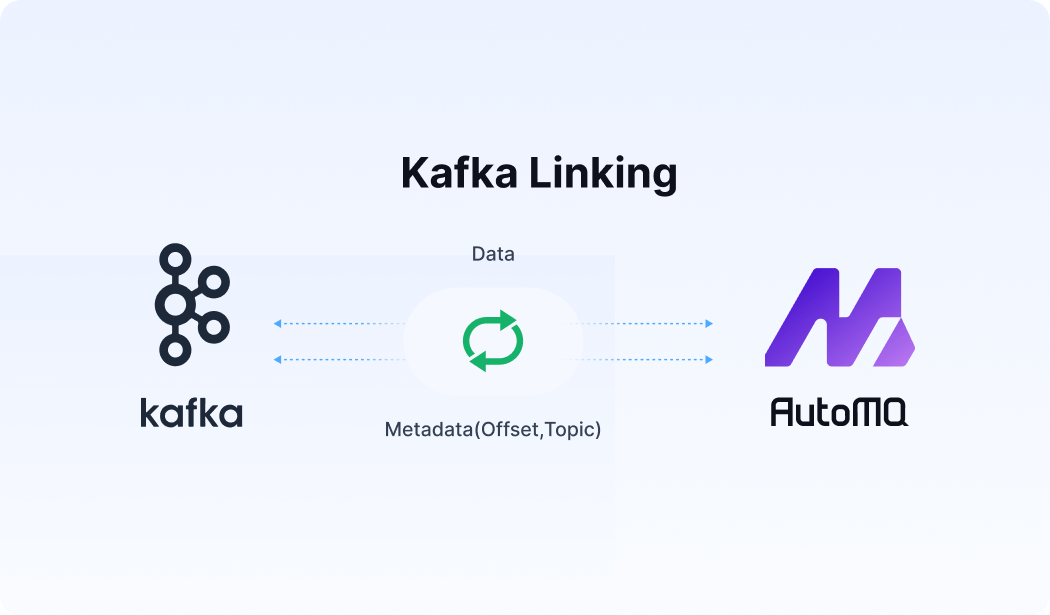




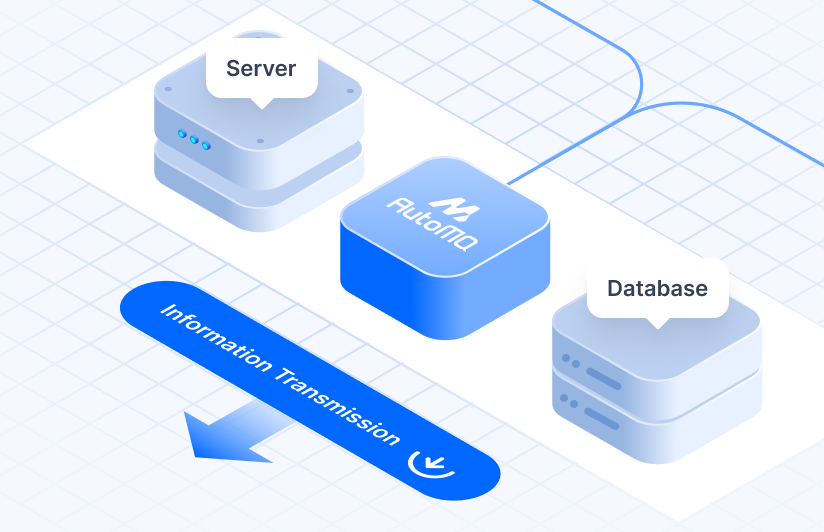



.png)






